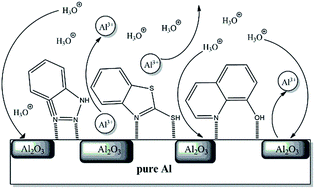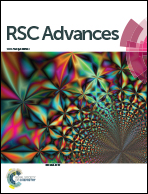Organic corrosion inhibitors for aluminium and its alloys in acid solutions: a review†
Abstract
The aim of this review is to summarise the research work published in the last two decades on the use of organic compounds as corrosion inhibitors for aluminium and its alloys in acidic solutions. The focus is on HCl and H2SO4 solutions due to their extensive use in different applications, such as chemical and electrochemical etching, acid cleaning, anodising, and acid pickling of aluminium. Other acids are also reviewed. The inhibition effectiveness of numerous organic compounds and their possible inhibition type and mechanism are also discussed. Electrochemistry is mainly used to investigate inhibitor performance.


 Please wait while we load your content...
Please wait while we load your content...